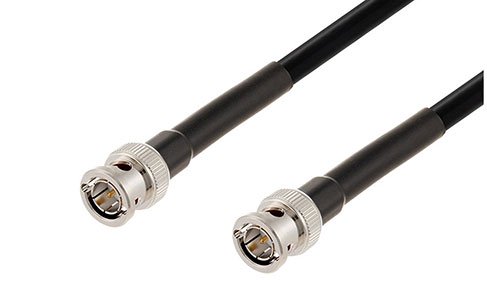What Are Fire Rated Coaxial Cables & When Are They Required?

In large facilities and buildings, it often comes up that there may be a need for fire rated coaxial cable. The term “plenum” cable gets tossed around as well. Many are confused on the terms and the rating systems and how this pertains to the United States National Electrical Code (NEC) and what regulations the National Fire Protection Association (NFPA) set out for cables in the NEC. Though not all states or regions adopt the NEC in the US, it is the most widely used electrical code, and is a good standard to base safe designs on. Of the 15 cable ratings in the NEC, there is only one that is rated for Plenum spaces.
A Plenum space is a cavity above a ceiling, below a floor, or beyond a way that is used for air circulation. This includes ductwork and any spaces that allows for the free transfer of air between regions of a building. Though plenum spaces are necessary for circulating air throughout a building for temperature control and ventilation purposes, these spaces also pose a danger during a fire. As plenum spaces naturally cannot contain fire breaks, any fire that enters a plenum space has a free and fresh-air-flowing passage to other parts of the building and can generate fumes and smoke that can be circulated throughout an entire building. As this is an especially life-threatening scenario, plenum spaces have a cable rating that is special to the space, called Communications Multipurpose Plenum (CMP). This is not to be confused with Communications Multipurpose (CM) or Communications Multipurpose Riser (CMR), which have their own ratings and limitations, and are not rated for plenum spaces.
CMP cables are often just referred to as “plenum” cables. These cables are made in such a way that if they are exposed to fire, they burn slowly, and exude a low enough amount of toxic fumes, gasses, and smoke. This requires very careful construction and testing of materials to ensure they meet safety regulations. Generally, there are well known materials that meet Plenum ratings, such as PTFE/Teflon jackets and certain types of PVC jackets. In the case of a coaxial cable, this means the jacket material and inner dielectric must be constructed of such materials. To further enhance the ratings of some materials, some plenum rated cables are further coated with flame retardants that help to ensure the cable doesn’t combust in the first place.
Special construction of any sort results in higher cable costs, which is understandable. This is also why plenum cables don’t tend to be used for all applications, even though they are also often designed to a high quality, low-loss, and are subjected to relatively thorough quality control screening.



